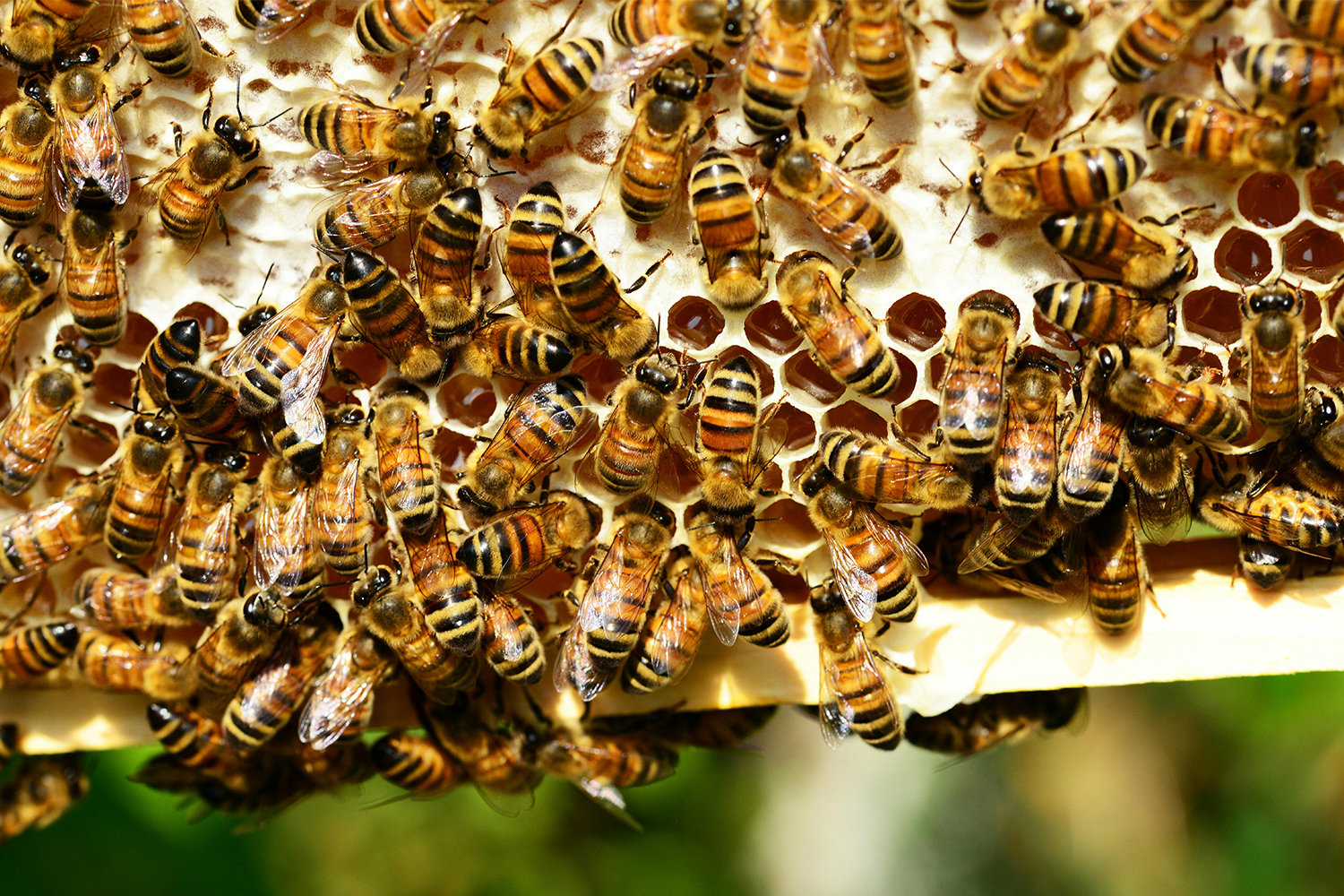
September 14, 2022
The bees are threatened with extinction. But is one bee the same as another? And what can we do to lend a hand to these hardworking insects?

What does "bee extinction" mean?
Let's start with some good news: The honeybee is doing well. Yes, you heard that right! While the term "bee extinction" in the media often refers to threats posed by pesticide use and the Varroa mite, the honeybee is actually a domesticated agricultural animal that has been selectively bred for decades to produce as much honey as possible. This makes it the most protected bee species, and its overall population is not endangered.
Wild bees, on the other hand, have been struggling for their place in nature for years. Of the roughly 550 wild bee species in Germany, about half are at risk of extinction. Unfortunately, wild bees are directly competing with honeybees, which are not only larger but also have a more diverse diet than their wild counterparts. Wild bees are often specialized to feed on specific plants, which are also visited by their more numerous generalist competitors. The use of pesticides and vast monocultures, such as rapeseed fields, also contribute to the food scarcity faced by wild bees.
To contribute in a small way to improving conditions for wild bees and other insects, here are two ideas that can be easily implemented in most city apartments.
Bee-Friendly Plants
If you're lucky enough to have access to a balcony, you can quickly turn it into a true paradise for bees! Alternatively, narrow flower boxes can also be attached to window sills. In addition to beautiful flowers, some kitchen herbs will attract hardworking bees if you'd like to make practical use of your balcony. We've focused on plants that wild bees particularly like to visit.
For the Kitchen: For the Eye:
Real Thyme Spicy Wall Pepper
Lemon Thyme Creeping Bellflower
Nasturtium Blue Cushion
Muscat Sage Allium (Ornamental Onion)
German Chamomile Rock Stonecrop
Online, you can find many more great plants and sort them by criteria such as light requirements and blooming time. If you come across so-called "old varieties" that are not available at the garden center, you can find a list of ecological seeds on the NABU website, where you can order rare seeds online.
Bienentränke aufstellen
Neben ihrer Nahrung brauchen Bienen, wie alle Lebewesen, Wasser. Besonders in den immer heißer werdenden Sommermonaten gestaltet sich die Suche nach Wasserquellen schwierig. Hier kommst du ins Spiel: Mit einer DIY-Bienentränke kannst du den durstigen Insekten eine kleine Oase bieten!
Dafür brauchst du folgendes Material:
1. Eine flache Schale oder einen tiefen Teller
2. Kleine Steine, Holzstückchen oder Kork, auf denen die Bienen landen können
Fill your container about 2/3 full with water and create small landing spots using your natural materials. Caution: Bees cannot swim! When arranging the materials, ensure that the bees have a sloping access to the water, everything is stable, and nothing slips accidentally. As long as you keep these points in mind, feel free to get creative with your water station!
Change the water regularly to keep the water station fresh and full.
Place the water station in a warm, sheltered spot (preferably next to the bee-friendly plants).
Do you have an interesting topic you'd like to report on? Whether you're a professional or a beginner – we're always happy to welcome new people who want to share their exciting topics with us.
Here you can access our event calendar. Sign up directly via 'Anni'!
Copyright 2024 - AStA FH Aachen